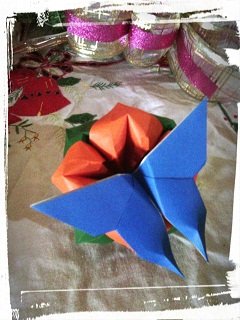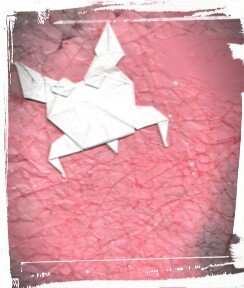Folding a pandemic situation. Origami as a didactic resource in confinement. (Part II)

.-.-.-.-.-.-.-.-.-.-.-.-.-.-.-.-.-.-.-.-.-.-.-.-.-.-.-.-.-.-.-.-.-.-.-.-.-.-.-.-.-.-.-.-.-.-.-.-.-.-.-.-.-.-.-.-.-.-.-.-.-.-.-.-.-.-.-.-.-.-.-.-.-.-.-.-.-.-.-.-.-.-.-.-.-.-.-.-.-.-.-.-.-.-.-.--.-.-.-.-.-.-.-.-.-.-.-.-.-.-.-.-.-.-.-.-.-.-.-.-.-.-.-.-.-.-.-.-.-.-.-.-.-.-.-.--.-.-.-.-.-.
Yoshizawa invites us to discover how satisfying it is to create with our own hands, and of course, in infinite ways. Now, why has the practice of this art been important to such an extent that its principles and ideas are considered in the aforementioned fields? It is possible that we find part of the answer within some of the advantages mentioned below.
Advantages of Origami: Origami has multiple advantages among them that it is a "therapy for hyperactivity, lack of attention, concentration and useful use of free time" (Diaz, 1999), p(S/D), in addition to the latter it also allows lowering stress and anxiety levels. According to module II of Plastic Arts of the UPEL-UNA. (1987) "in hospitals it is used in labor therapy activities. In addition, other qualities are assigned to it, such as that it is the ideal method to discipline the spirit, to give balance; that is to say, it gives harmony to the spirit" (p.154).
We could also mention that it also allows the development of fine motor skills, helps in decision making when the student discriminates between one format and another to develop the piece, finally helps to increase the perception of figure, shape and form, development of manual, organizational and logical thinking among others. In the case of creativity, contrary to what others assert, folding or origami does not contribute to its development and this is because folding is a series of sequenced instructions that must be followed to obtain a result that is the figure created by another person, what is certain is that it encourages the imagination, Once the figures are finished, they can be used either in a contemplative way, to elaborate a composition or to establish a play relationship as it is done with toys, in short, it can be creative in the dynamics that are generated from the created object, so they are a means that inspires its use in other areas and aspects of daily life. It can be concluded that the practice of this art stimulates creativity and inspires, in some people, to create their own pieces.
Origami allows to make a variety of figures from birds, prehistoric, aquatic and terrestrial animals, geometric, mythological, human figures, faces or masks, airplanes or boats. In short, everything figurative and non-figurative (or abstract) that can arise from a single sheet of paper or several which allows us to combine different pieces called Modular Origami or assembly. Origami does not necessarily have to be contemplative, it can also be a way to cover a need such as folding a glass to drink water or a hat to cover us from the sun.
Duque (2001), tells us that the number of folds determines the difficulty, for example:
• From 5 folds for kindergarten children.
• From 5 to 15 for primary grades.
• From 15 to 30 easy figures.
• From 30 to 40 folds are complex.
• From 40 to 80 figures of high level of difficulty.
• And from 80 onwards only for experts. This includes figures of assemblies that can be built by more than 400 modules.
Traditional origami does not allow cuts or the use of glue to achieve effects in the figures, however many authors such as Aminta Diaz, Kunijico-Kasahara, Imgard Kneissler among others, take certain liberties. The recommended paper should be very resistant and malleable, preferably thin. Kasahara(19993) says that :
"The paper we are going to use... it doesn't have to be a special paper. It can be newspaper, wrapping paper, cigarette paper, chewing gum paper, Christmas paper or any other paper. For figures that need a few folds, we can use cardboard. It won't be easier to fold thick paper if we wet one side first with a spray bottle. The wet side has to be on the outside. When you have folded such a figure put it in its fixed position and let it dry completely. It will be very stable and will hold its shape well"( p,174).
Now, when we talk about folding we imagine only a square sheet of paper that has the ability to be transformed, this idea has been taken to other aspects that has allowed to create sheets of all kinds, large, small, microscopic with folding capacity that allow to open or close to certain stimuli as well as adapt or attach as appropriate.
As we can see origami is an art that stimulates the imagination and therefore our ability to respond, stimulates our mental agility, and of course it is an art that allows us to develop patience, discipline and the ability to concentrate very necessary for daily work and in states of confinement as we are living, the development of these aspects gives a sense of well being and allows us to achieve high levels of relaxation to concentrate on making, manufacturing and creating.

.-.-.-.-.-.-.-.-.-.-.-.-.-.-.-.-.-.-.-.-.-.-.-.-.-.-.-.-.-.-.-.-.-.-.-.-.-.-.-.-.-.-.-.-.-.-.-.-.-.-.-.-.-.-.-.-.-.-.-.-.-.-.-.-.-.-.-.-.-.-.-.-.-.-.-.-.-.-.-.-.-.-.-.-.-.-.-.-.-.-.-.-.-.-.-.--.-.-.-.-.-.-.-.-.-.-.-.-.-.-.-.-.-.-.-.-.-.-.-.-.-.-.-.-.-.-.-.-.-.-.-.-.-.-.-.--.-.-.-.-.-.
Written by Nadia Padrón: @hojaraskita
Hi @hojaraskita
Sorry for my ignorance but I didn't know this "origami has multiple advantages among them that it is a "therapy for hyperactivity, lack of attention, concentration and useful use of free time", I always related it as some form of artistic expression. Thank you for this nice reading.
Best regards, be well.
Thank you for taking the time to read, comment and vote. This topic is focused on its educational use. It will have more parts. Hugs
I have never read so much about origami, it is definitely an art, thank you for sharing it.